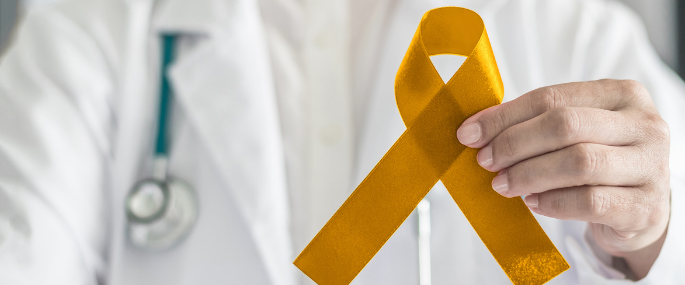If your family or someone you know is facing childhood cancer, please call us at 403 216 9210 or email us to learn more about our free programs and services.
- CARCINOMAS are very rare in childhood. They are cancers that begin in the epithelial tissue, which covers the external surfaces of the body and lining of glands and internal body cavities.
- CENTRAL NERVOUS SYSTEM TUMORS are found in the central nervous system, which makes up the brain and spinal cord. These organs are responsible for controlling body functions such as movement, thinking, learning, breathing and heart rate. Tumours can be malignant or benign. There are many types of CNS tumours. CNS tumours are the most common solid children's tumours, around one in five children with cancer have a CNS tumour.
- KIDNEY CANCERS occur when cancerous cells grow in the kidney tissue. Wilm's tumour is the most common type of kidney cancer and usually occurs in very young children. Renal cell carcinoma is a less common type of childhood cancer, in which abnormal cells grow in the lining of small tubes in the kidney. Other forms of kidney cancer include clear cell sarcoma of the kidney and rhabdoid tumour of the kidney. Some of these cancers can also spread to other parts of the body. Around six in 100 childhood cancer cases are kidney cancer.
- LEUKEMIA is a cancer of the blood-forming cells produced in the bone marrow. Bone marrow is located in the centre of bones and creates blood cells. There are different types of leukemia, including acute lymphoblastic leukemia, acute myeloid leukemia and the less common chronic myeloid leukemia and juvenile myelomoncytic leukemia. Leukemia accounts for almost one out of three cancers in children. Acute lymphoblastic leukemia is the most common form of childhood cancer.
- LIVER CANCERS occur when cells in the liver grow abnormally and form cancerous tumours. Hepatoblastoma is the most common form of liver cancer and is most commonly found in infants or very young children.
- LYMPHOMA is a cancer of the lympthatic system, which is part of the immune system. Lymphatic tissue can be found in many places in the body, including the the lymph nodes, tonsils, adenoids, spleen, thymus gland and inside the bone marrow. The first signs of lymphoma may be, but are not limited to, a lump or swelling in the neck, groin or underarm. Lymphoma cells can also cause swelling in other parts of the body, causing pain. There are two main types of lymphoma, Hodgkin's lymphoma and non-Hodgkin's lymphoma.
- NEUROBLASTOMA is a type of solid tumor occurring in the nervous system. This type of tumour grows in the developing cells of the sympathetic nervous system. This is the nerve system that transports messages throughout the body. All involuntary actions are performed by the sympathetic nervous system. This includes heart rate, dilating of the pupils, etc. When a young cell of the sympathetic nervous system mutates, neuroblastoma occurs. A young cell is called a neuroblast. When mutation occurs, the neuroblasts grow uncontrollably and create cancerous tumours. Approximately seven out of everyone 100 children diagnosed with cancer have neuroblastoma.
- SARCOMAS are solid tumors that are found in the bone, muscle, and other soft tissues. There are many types of childhood cancer sarcomas. Osteosarcoma is a common cancer of the bone, most often the bones of the arms and legs. It can be found in other areas of the body too. Ewing's sarcoma is another common bone tumour, often affecting the bones of the pelvis, chest, arms, and legs. It can also occur in any bone in the body. Approximately12 in every 100 cases of childhood cancer are sarcomas.
- THYROID CANCERS are rare in small children, more commonly found in older children and teenagers. About one in every 100 childhood cancer diagnosis are thyroid cancer. It occurs when cancerous cells grow in the thyroid gland, which makes hormones to regulate temperature, energy level, body weight and appetite.
